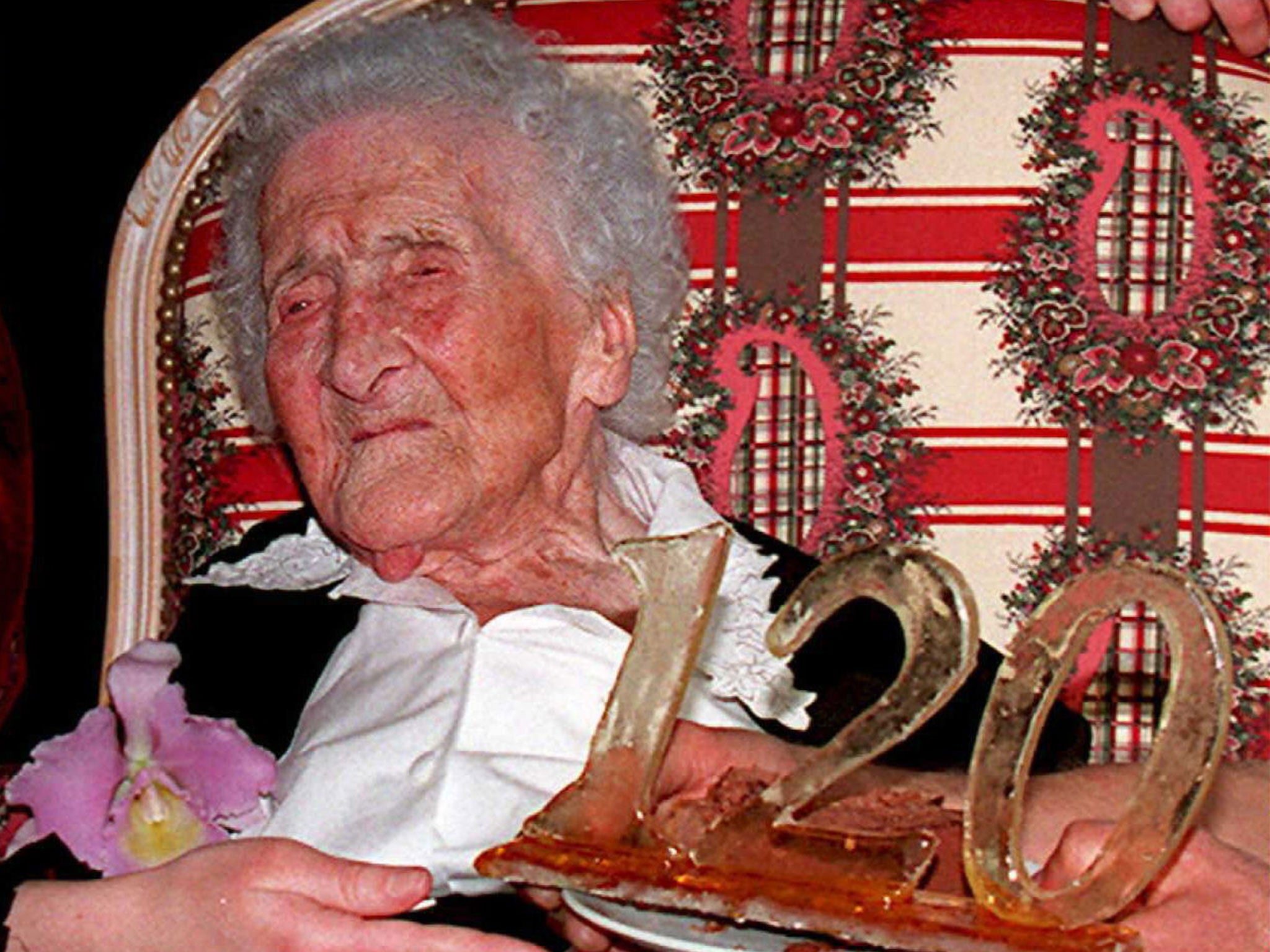World’s oldest-ever person was fraud who stole mother’s identity, researchers claim
Study argues Jeanne Calment, 122, was actually only 99-year-old who assumed mother’s name to avoid tax

Your support helps us to tell the story
From reproductive rights to climate change to Big Tech, The Independent is on the ground when the story is developing. Whether it's investigating the financials of Elon Musk's pro-Trump PAC or producing our latest documentary, 'The A Word', which shines a light on the American women fighting for reproductive rights, we know how important it is to parse out the facts from the messaging.
At such a critical moment in US history, we need reporters on the ground. Your donation allows us to keep sending journalists to speak to both sides of the story.
The Independent is trusted by Americans across the entire political spectrum. And unlike many other quality news outlets, we choose not to lock Americans out of our reporting and analysis with paywalls. We believe quality journalism should be available to everyone, paid for by those who can afford it.
Your support makes all the difference.The woman widely recognised as the longest-lived human in history may have stolen her identity as part of an elaborate tax evasion scheme, a group of researchers have claimed.
At 122 years and 164 days, no other person has come close to breaking the record lifespan Frenchwoman Jeanne Calment set on her death in 1997.
However, a new research paper by Russian mathematician Nikolay Zak of the Moscow Society of Naturalists at Moscow State University suggests the supercentenarian’s story may not be all it seems.
In the paper, titled “Jeanne Calment: the Secret of Longevity”, Mr Zak claims the Ms Calment who garnered worldwide media attention in her later life was in fact her own daughter, Yvonne.
He hypothesised Yvonne had assumed her mother’s identity in 1934, in a bid to avoid paying inheritance tax and was, crucially, only 99 when she died.
Mr Zak offered a number of discrepancies to state his case, including cognitive exams Ms Calment performed in her final years, in which she scored at a similar level to test subjects in their 80s and 90s.
He also cited apparent changes to the shape of her ears and forehead compared to photographs of her early life, as well as data showing her height had reduced far less than the shrinking seen in other supercentenarians.
Gerontologist Valery Novoselov, who aided Mr Zak in his research, told Agence France-Presse there was good reason to scrutinise Ms Calment’s record.
“As a doctor I always had doubts about her age,” he said. “The state of her muscle system was different from that of her contemporaries. She could sit up without any support. She had no signs of dementia.”
But some remain sceptical of the new evidence put forward, including Jean-Marie Robine, research director at France’s National Institute of Health and Medical Research and one of the scientists tasked in the mid-1990s with verifying Ms Calment’s age.
“All this is completely wobbly and is not based on anything,” he told French newspaper Le Parisien.
“We have never done so much to prove the age of a person. We never found anything that allowed us to have the slightest doubt of her age.
“We had access to information that only she could know, such as the names of her teachers of mathematics or buildings from the past.
“She was asked questions about these topics. Either she did not remember, or she just answered. Her daughter could not have known that.”
Only one in a thousand people who reach their 100th birthday go on to become a supercentenarian – a person who passes 110 years old.
The second-longest-lived person behind Ms Calment is Sarah Knauss of the United States, who was 119 years and 97 days old when she died two days short of the turn of the millennium in December 1999.
Join our commenting forum
Join thought-provoking conversations, follow other Independent readers and see their replies
Comments